Best AI Prompts for Academic Writing Skills (2025 Guide)
Summary
The article also explains common AI writing patterns (repetitive phrasing, mechanical tone) to help students recognize and avoid them while developing their own authentic academic voice. It introduces GPTHumanizer as a learning tool that enhances AI-generated examples to sound more natural, helping students study writing flow, clarity, and style. Pricing tiers and responsible-use guidelines reinforce transparency and academic integrity.
Overall, the guide shows how strategic prompting + ethical AI use supports genuine writing skill development.
With today's advanced technology, more students are using AI tools like ChatGPT, Claude and Gemini to enhance their writing skills and support their research process. Students are finding AI writing assistants helpful for learning better writing techniques and understanding complex topics when studying. This makes these tools increasingly popular as learning aids in universities around the world.
⚠ Academic Integrity Notice: This guide is designed to help you learn better writing techniques using AI as a learning tool. Always follow your institution's policies regarding AI use and maintain transparency about your learning methods.
Yet, many students are faced with a core problem: they have no idea how to write a good prompt that will help them learn effectively and develop high-quality writing skills. The truth is, an AI tool's response can be a basic answer or a sophisticated learning experience, depending on the initial prompt and ongoing refinement process.
Master AI Prompts for Learning Professional Writing
Essential Prompting Techniques for Academic Learning Excellence
Many students struggle to get AI tools to provide the sophisticated, educational guidance they need for developing university-level writing skills. The key lies in crafting detailed, strategic prompts that guide AI to help you understand professional academic writing techniques. Here are the proven techniques:
1. Academic Context Setting
● Provide clear background information about your learning goals
● Specify your academic level and field of study
● Define the scope, purpose, and learning objectives
● Include any specific theoretical frameworks or approaches you want to understand
2. Structure and Format Learning
● Request explanations of specific essay formatting (introduction, body paragraphs, conclusion)
● Ask for guidance on particular argument structures (comparative analysis, cause-effect, etc.)
● Learn about citation requirements and academic style (APA, MLA, Harvard)
● Understand word count planning and section distribution
3. Depth and Analysis Skill Development
● Request guidance on critical analysis rather than just description
● Ask for help understanding multiple perspectives and counterarguments
● Learn how to develop evidence-based arguments with specific examples
● Study scholarly sources and academic-level reasoning techniques
Practical Learning Example: Cryptocurrency Essay Skills
Let's walk through a real learning example. Suppose you're a university student wanting to develop skills for writing an economics essay about cryptocurrency's impact on traditional banking. Here's how to approach this as a learning exercise:
Step 1: Learning-Focused Initial Prompt
Instead of simply asking: "Write about cryptocurrency and banks"
Use this comprehensive learning prompt:
You are an economics writing tutor helping a university student learn how to structure and develop a sophisticated analytical essay.
Help me understand how to approach the topic: "Cryptocurrency's Impact on Traditional Banking: Disruption or Integration?"
Learning objectives:
Understanding how to structure a 1500-2000 word academic essayLearning to develop critical analysis techniquesUnderstanding how to incorporate multiple economic perspectivesLearning to balance opportunities and challenges in analysisUnderstanding how to use current examples effectively (2023-2025)Learning proper academic transitions and argument flow
Please guide me through:
How to create an effective outlineHow to develop a strong thesis statementHow to structure arguments in each sectionHow to incorporate evidence and examplesHow to maintain academic tone throughout
Focus areas to help me understand: market dynamics, regulatory challenges, technological innovation, consumer behavior analysis techniques.
Step 2: Skill Development and Learning Refinement
After receiving the initial guidance, enhance your learning with follow-up prompts:
Now help me understand how to develop the regulatory challenges section by:Teaching me how to research and incorporate specific examples from different countries (US, EU, China)Showing me how to analyze recent policy developments effectivelyHelping me understand how to assess impact on market stabilityTeaching me to develop nuanced arguments by presenting counterarguments effectively
Step 3: Advanced Writing Technique Learning
For advanced skill development:
Please help me review and improve my writing technique by teaching me how to:Strengthen thesis statements with more specific, defensible claimsAdd effective transitional phrases between paragraphs for better flowIncorporate sophisticated economic terminology appropriatelyEnsure each body paragraph has clear topic sentences and conclusionsCreate compelling introductory hooks that engage readers
Due to space limitations, we will not show the entire learning process. As demonstrated, with these educational prompts, you can develop comprehensive understanding of academic writing techniques while learning from AI-generated examples and guidance.
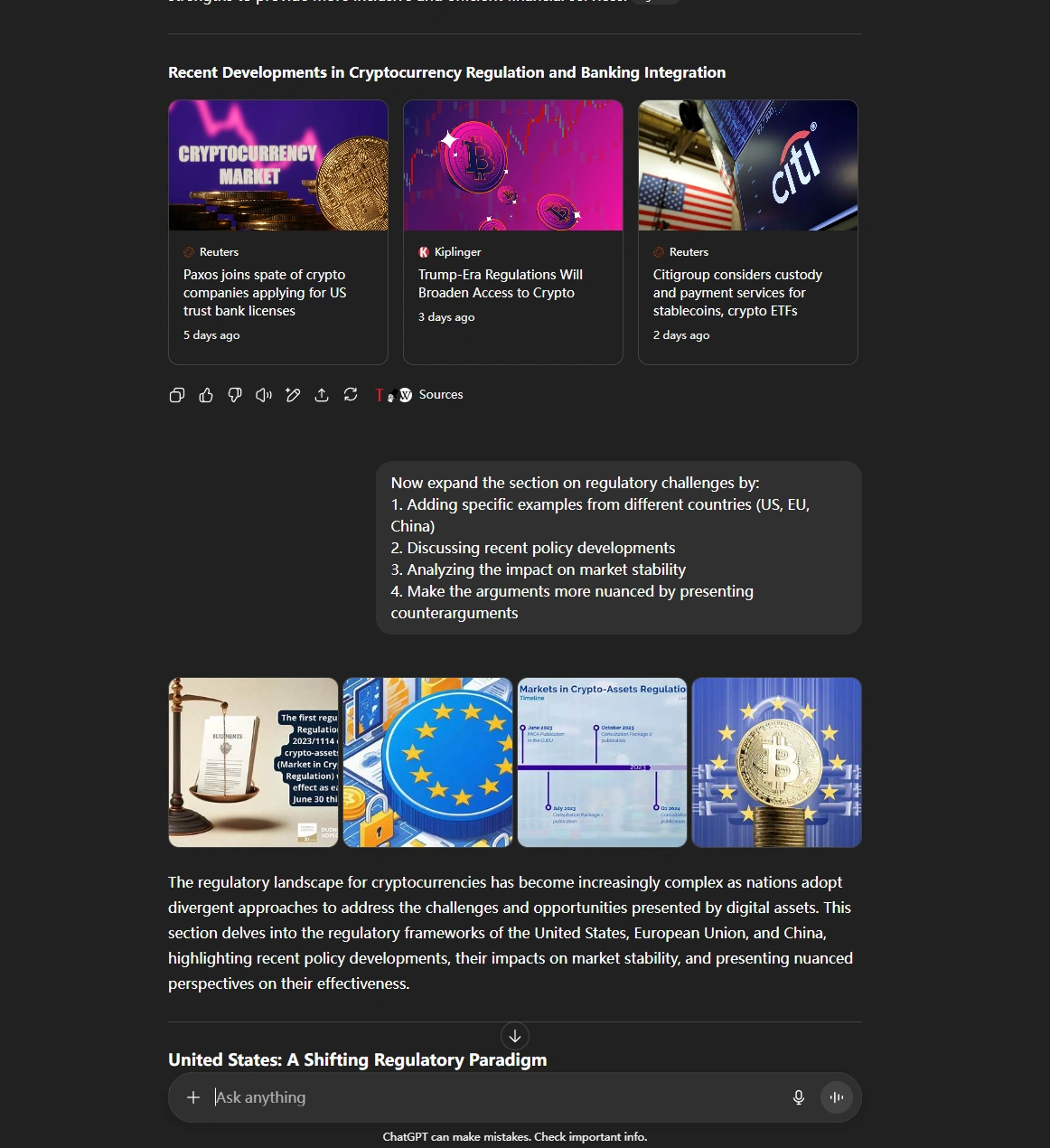
Understanding AI Writing Characteristics for Learning Purposes
When learning from AI-generated examples, it's important to understand common patterns so you can develop your own authentic writing style. Recognizing these characteristics helps you learn what to adapt and what to develop independently:
Common AI Writing Patterns to Learn From:
● Overuse of transitional phrases like "Furthermore," "Moreover," "In conclusion"
● Repetitive sentence structures that lack variety
● Generic examples that could be more specific and personal
● Overly formal tone that may not match your natural voice
● Mechanical transitions that don't flow naturally
● Certain vocabulary patterns that feel impersonal
Developing Your Own Writing Style:
● Learn to vary your transitional phrases naturally
● Practice incorporating your own insights and perspectives
● Develop examples from your own research and understanding
● Find your authentic academic voice while maintaining professionalism
● Create smooth, logical connections between ideas
GPTHumanizer: Enhancing Writing Learning Experience
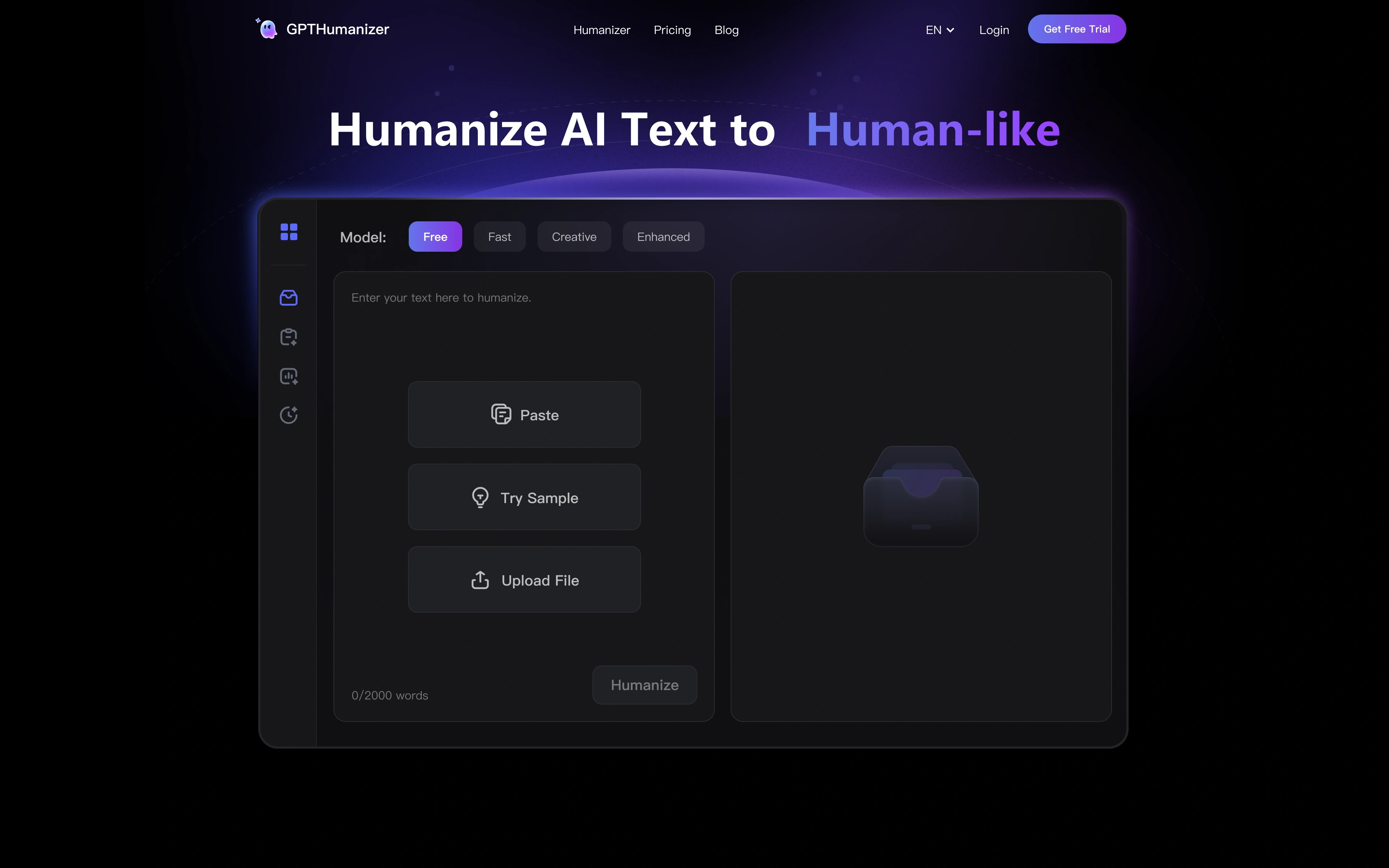
Understanding the importance of developing natural, authentic writing skills, students need reliable tools that help them learn to write more naturally while maintaining academic standards. They want applications that help them understand what makes writing sound more human and authentic, while preserving the quality and integrity of their learning process.
This is where GPTHumanizer becomes valuable for learning. Our AI text enhancement tool was created to help students understand natural writing patterns, making AI-generated learning examples more relatable and educational, while helping you develop your own authentic writing voice.
Key Educational Features
Natural Writing Pattern Learning: GPTHumanizer helps you understand how to make writing sound more natural and conversational while maintaining academic standards. Use it to study the differences between mechanical and natural writing styles.
Writing Style Development: Every piece of content is enhanced to demonstrate unique, natural writing patterns, helping you learn to develop your own authentic voice free from generic AI characteristics.
Quality Learning Examples: Rather than simply changing words, GPTHumanizer creates learning examples that demonstrate fluent, authentic writing techniques while preserving educational value and meaning.
Real-World Application
Let's see how GPTHumanizer can enhance your learning experience with our cryptocurrency essay example. After using the prompting techniques above to generate learning materials, you can use GPTHumanizer to study different writing styles and understand what makes writing sound more natural and engaging.
Learning Exercise: Compare different versions of the same content to understand:
How formal academic writing can be made more engaging
What makes writing sound more natural and human
How to maintain professionalism while developing your own voice
Techniques for improving flow and readability
Powerful Learning Features
Writing Style Analysis: GPTHumanizer can help you understand different writing styles and techniques, showing you how to adapt content while maintaining authenticity and academic integrity.
Easy Three-Step Learning Process
Input Learning Material: Paste AI-generated learning examples or draft content

2. Enhance for Learning: Process content to understand different writing approaches
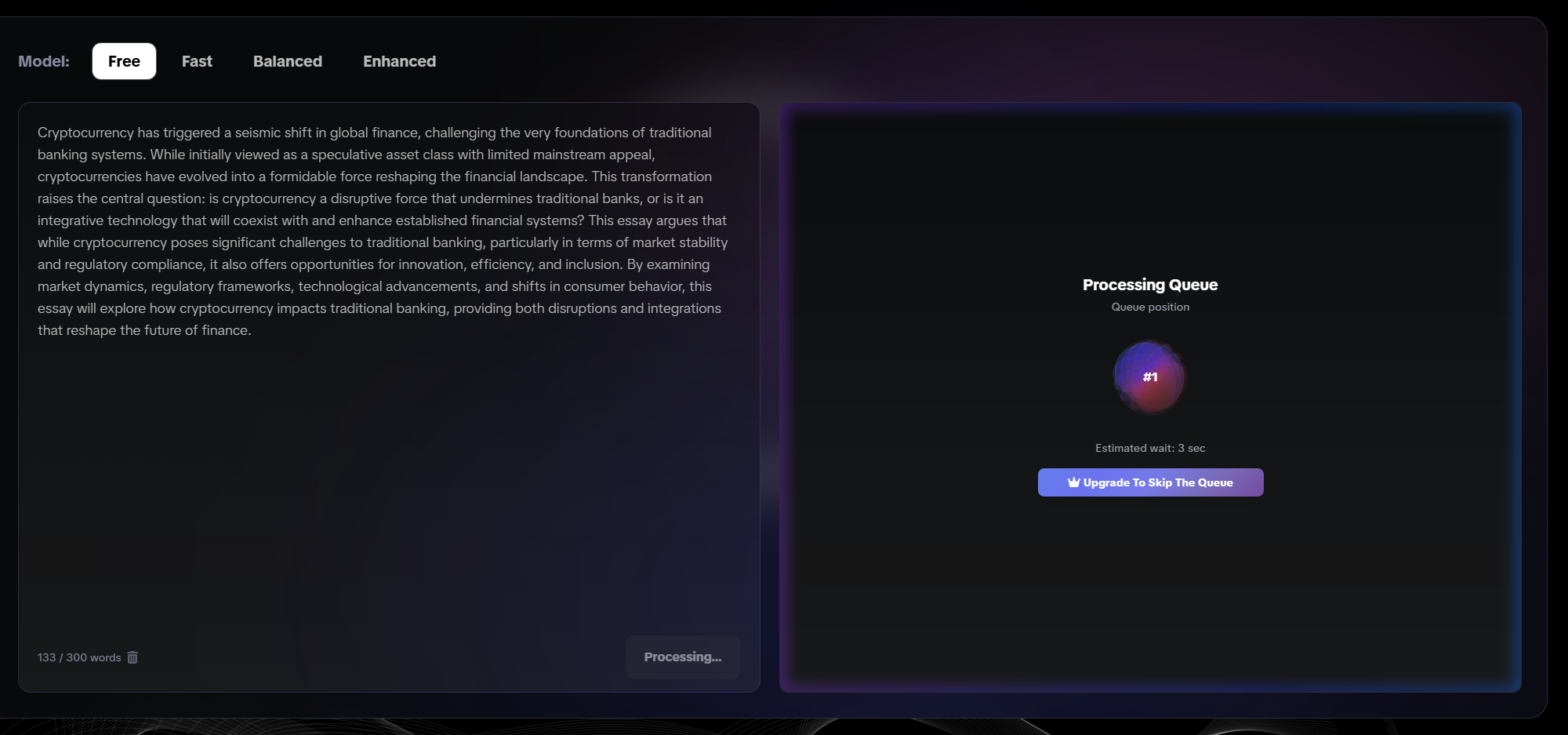
3. Study and Learn: Compare versions to understand writing techniques and develop your own style
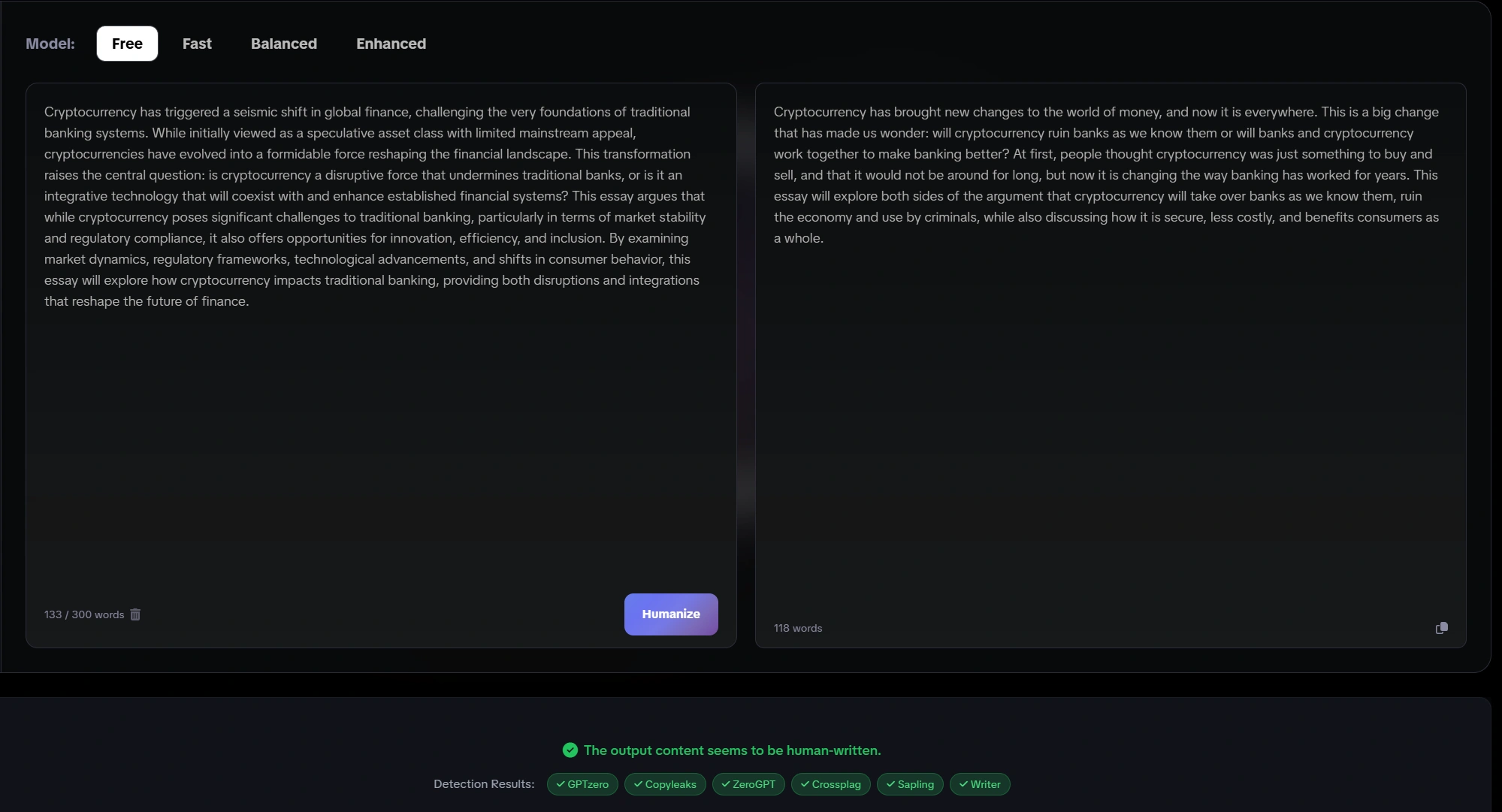
Accessible Learning Tool with Premium Options
GPTHumanizer offers free access to basic text enhancement features for educational purposes. Students, researchers, and learners can explore different writing styles and techniques without restrictions.
For users requiring advanced learning capabilities, our premium plans provide:
● Enhanced processing models (Fast/Balanced/Enhanced)
● Higher word limits for longer learning exercises
● Priority support for educational use
● Advanced style comparison features
● Comprehensive writing analysis tools
Pricing Structure
Plan | Price | Monthly Words | Words per Request | Key Features |
Free | $0 | 1,000 words | 200 words |
|
Basic | $4.99 | 5,000 words | 800 words |
|
Standard | $9.99 | 30,000 words | 1,200 words |
|
Pro | $18.99 | 150,000 words | 2,000 words |
|
Responsible Use and Academic Integrity
Important Guidelines for Ethical Learning:
Always follow your institution's policies regarding AI use in academic work
Use AI tools for learning and skill development, not as substitutes for your own thinking
Be transparent with instructors about your learning methods when required
Develop your own ideas and arguments, using AI only as a learning aid
Cite AI assistance when required by your institution's guidelines
Focus on understanding concepts rather than generating final submissions
Conclusion
Integrating strategic AI prompts with responsible learning practices creates an effective educational workflow for developing academic and professional writing skills. With proper prompt engineering techniques, you can create valuable learning experiences that help you understand professional writing standards and develop your own authentic voice.
This represents a responsible approach to AI-assisted learning that combines the educational power of AI tools with ethical academic practices. This approach allows students, researchers, and learning professionals to develop genuine writing skills efficiently and effectively while maintaining academic integrity.
Remember: The goal is to become a better writer yourself, not to have AI write for you. Use these tools to learn, practice, and develop your own capabilities while always adhering to your institution's academic integrity policies.
Related Articles
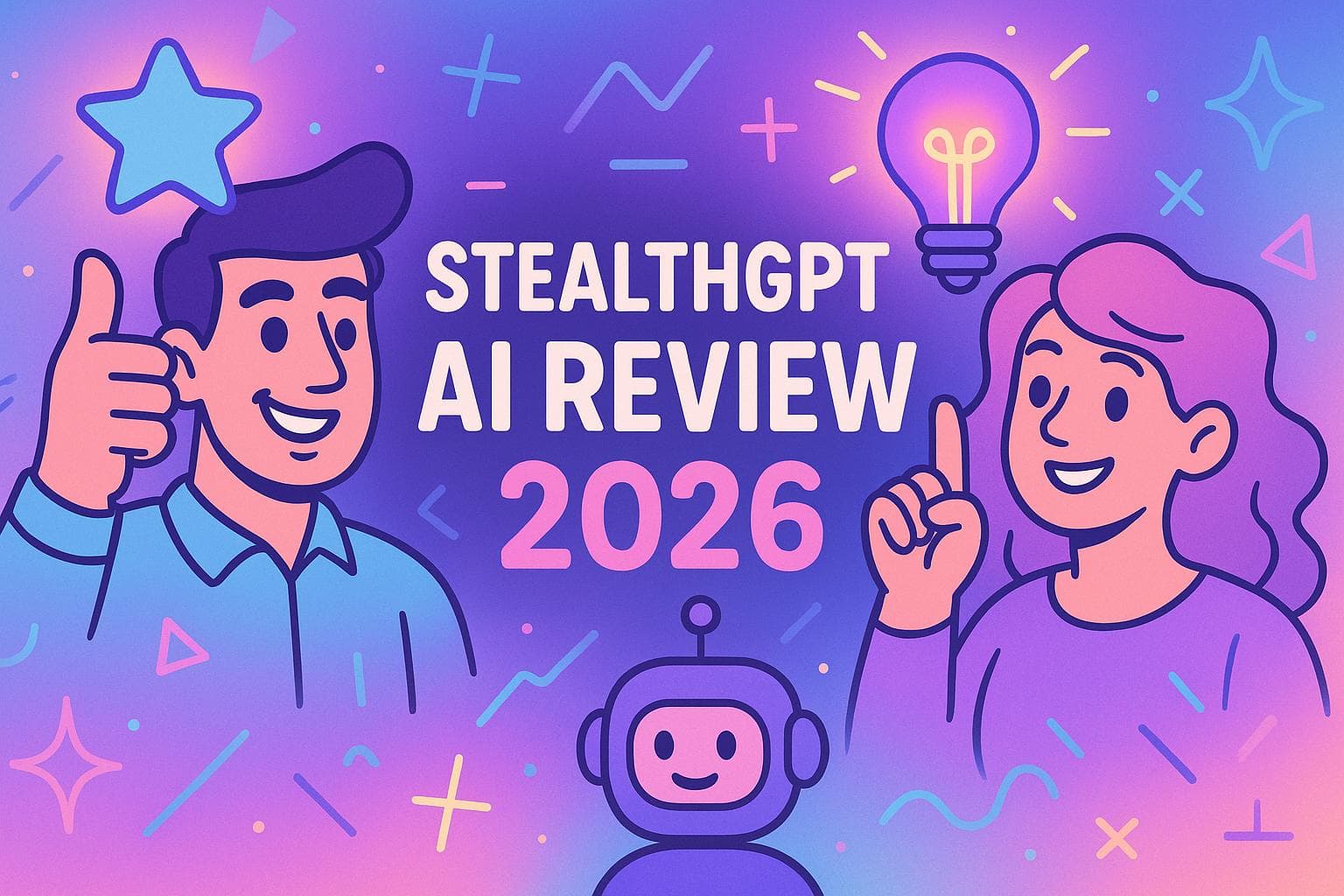
StealthGPT AI Review 2026: Feature, Pricing & Comparison
An in-depth StealthGPT review for 2026, covering its features, pricing, pros & cons, real humanizati...

WriteHuman AI Review 2026: Feature, Pricing & Comparison
An in-depth and objective evaluation of writehuman ai based on independent testing and user feedback...

Kipper AI Review 2026: Feature, Pricing & Comparison
A comprehensive and objective Kipper AI review for 2026 covering its features, pricing, performance,...

MyEssayWriter AI Review 2026: Feature, Pricing & Comparison
An in-depth 2026 review of MyEssayWriter.ai, covering features, pricing, real writing & humanization...
